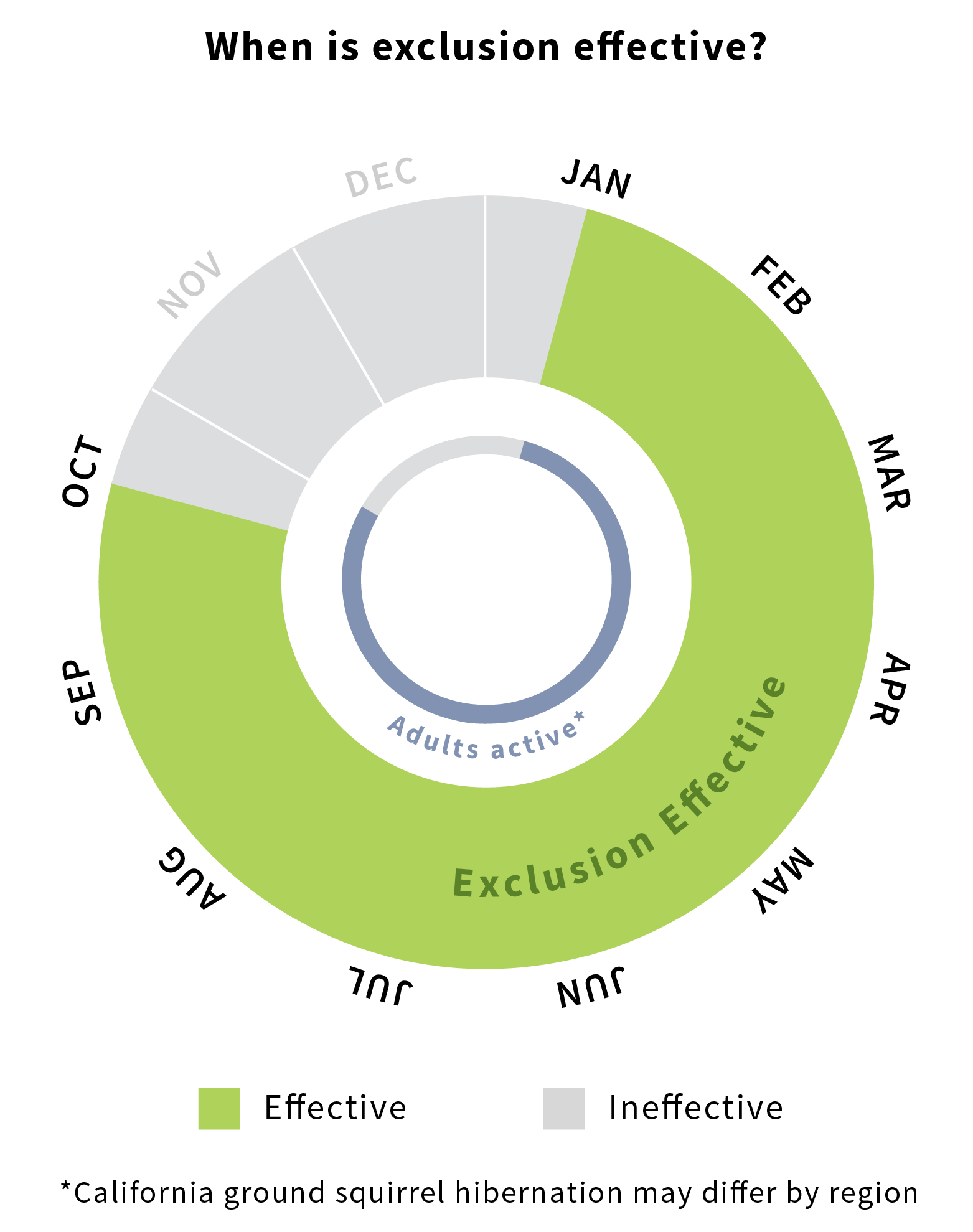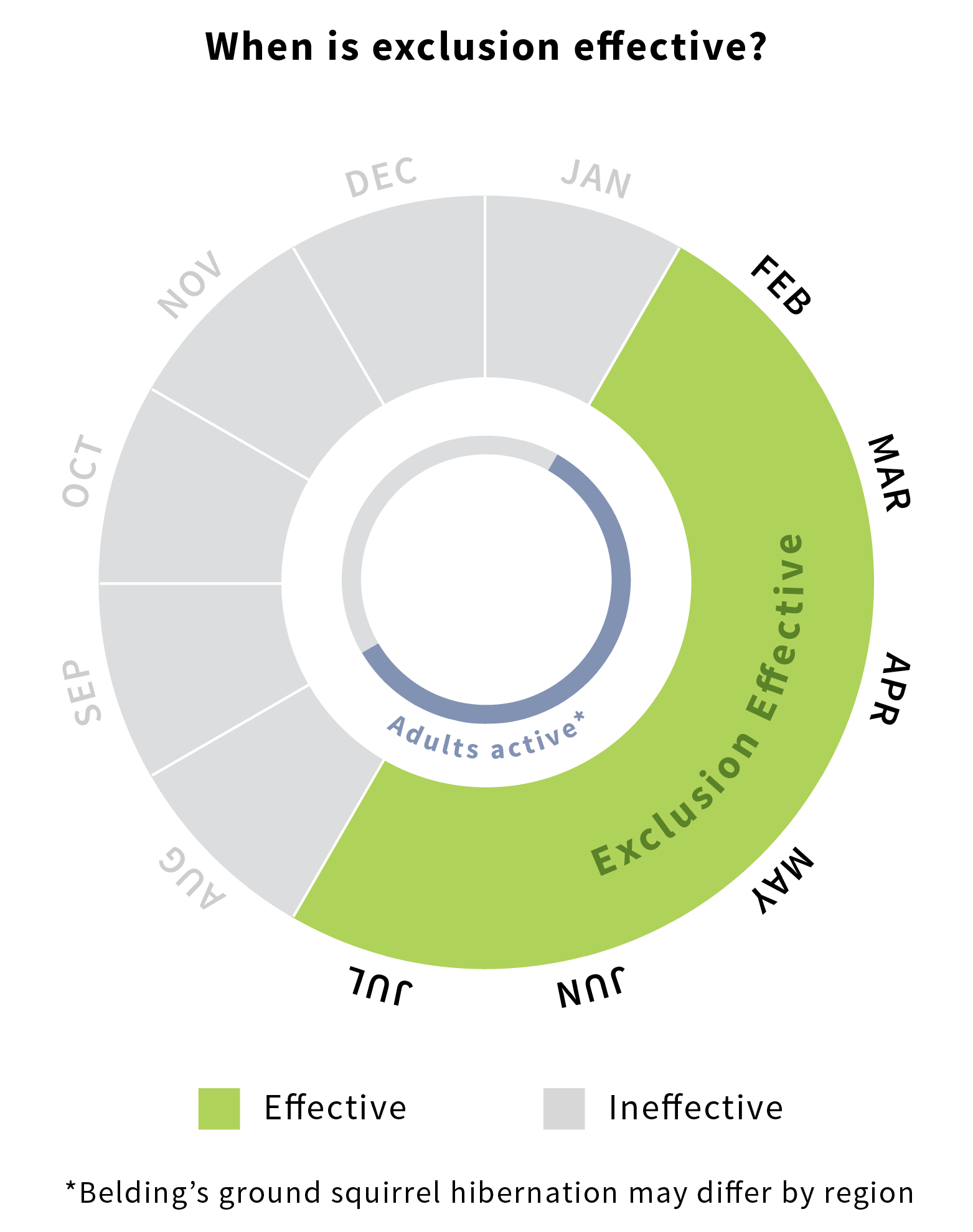Exclusion
|
The effectiveness of fences in ground squirrel management is largely unknown. One study suggests that if constructed from durable materials (e.g. roofing iron and fence posts) and regularly checked for breaches, fences may provide over a 90% reduction in Belding’s ground squirrel activity. Fencing should be buried approximately 3 feet below the ground and extend 2 feet above it. Such fencing can be expensive in the short-term, but, over time, may prove to be cost-effective if little extra expense is incurred for ground squirrel management.
Squirrels can be excluded from buildings with the same techniques used to exclude commensal rats. Use sheet metal cylinders around tree trunks to prevent loss of fruit or nut crops, as ground squirrels can climb trees sufficiently to cause some damage. While fences can be constructed to exclude squirrels, they aren’t usually practical because of their expense. Ground squirrels can readily dig beneath fences that are buried several feet deep in the soil. Sheet metal caps atop a 4-foot wire mesh fence will prevent them from climbing over. For a fence to remain squirrel-proof, the squirrels that burrow near the fence should be eliminated. Experiments with a temporary low electric fence have been shown to seasonally discourage California ground squirrels from invading research or small garden plots from outside areas. |
Exclusion should be implemented when squirrels are active, which varies for California (above) vs. Belding's ground squirrel (below). |



